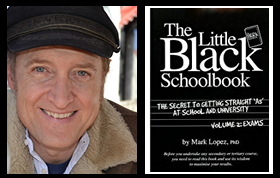Dr Mark’s The Meaning in a Nutshell
Hannah Kent, Burial Rites (2013) — The Meaning in a Nutshell
Hannah Kent, Burial Rites (2013)
Hannah Kent’s novel Burial Rites (2013) re-examines an event in nineteenth century Icelandic legal history, the story of Agnes Magnúsdóttir who, in 1829, was the last woman in that country to be sentenced to capital punishment. Writing from a feminist perspective, the novelist seeks to revise and rehabilitate the reputation of this woman, who was widely vilified as a murderess and monster, to instead depict her as the unfortunate victim of poverty, deprivation, patriarchy, and prejudice for being both poor and an intelligent woman. This is shown to have led to a miscarriage of justice.
As a feminist novel, it seeks to tell the story of a strong woman who struggled against prejudicial stereotyping to be recognised as the complex and nuanced individual she truly was, while enduring a degree of oppression that would daunt many. In doing this, the novel has much to say about the inequality and injustice resulting from patriarchy, misogyny and sexism. It therefore covers issues like: her limited opportunities for education, employment, and for upward social mobility; her vulnerability to, and experience of, exploitation (economically and sexually) at the hands of men in authority over her; as well as her experience of domestic abuse and violence.
The novel also has much to say about poverty and inequality, and the social injustices believed to result from these conditions. Those at the bottom of society, the peasants, the working class, and the underclass, appear to be caught in a poverty trap of no fault of their own, which sees them work hard all their lives and have little to show for it.
The novel is also anti-religious, showing Christianity to be the faith and legitimating ideology of an oppressive ruling class, as well as being the source of prejudice and superstition among ordinary folk. Consequently it appears to work against the proper administration of justice and expressions of compassion towards those who deserve it. Notably, the most decent religious figure, The Reverend Toti, is shown to break with the standard religious practices expected of him by those in authority; while the most irreligious character, Natan, is depicted as a man of science and as a herbalist healer whose remedies are effective and valued in the community.
Meanwhile the novel mounts a moral case for liberal law reform and against capital punishment, by showing how prisoners can be subjected to inhumane and deplorable living conditions, and how the courts can get it wrong, sentencing the wrong people, like Agnes, who receives capital punishment, which is depicted in the novel as a cruel and barbaric practice.
As well as being a historical novel, it is also a romance novel and crime thriller, dimensions that give it much of its entertainment value. In addition, it is also a postmodern novel in that in her quest for believability the novelist deliberately blurred the standard distinctions between fiction and nonfiction. She also challenged several literary conventions, such as by alternating between a first person and third person narrative. The novel also shares the postmodern fascination with social divisions along the lines of race, ethnicity, class and gender, which, in the case of this novel, focused on divisions of class and gender and the inequality and injustices clustered around them.
Student resources by Dr Mark Lopez
© Mark Lopez 2019 ALL RIGHTS RESERVED.
Student Resources by Dr Mark Lopez
Subject: Burial Rites meaning, Burial Rites themes, Burial Rites analysis, Burial Rites notes
The purpose of the concise notes of Dr Mark’s The Meaning in a Nutshell is to provide much needed help to students seeking to unlock the meaning of the texts with which they have to deal. More elaborate notes are provided in lessons as part of my Melbourne private tutoring business.
Published by https://doctormyweb.com.au/
